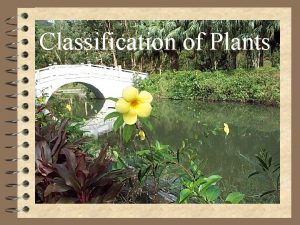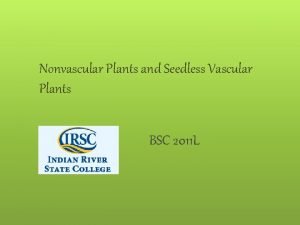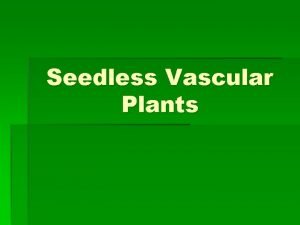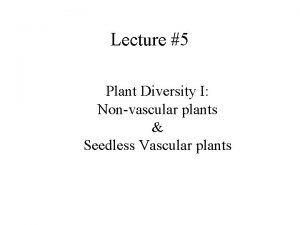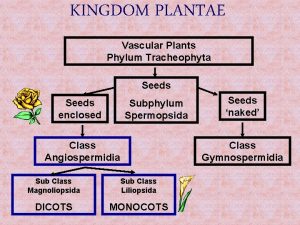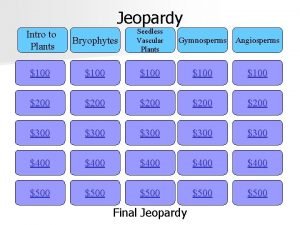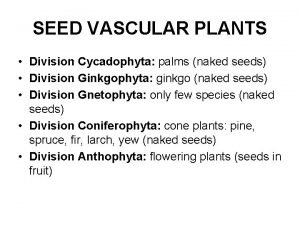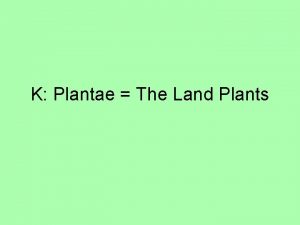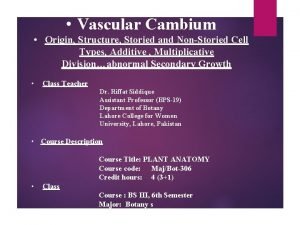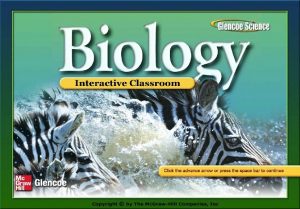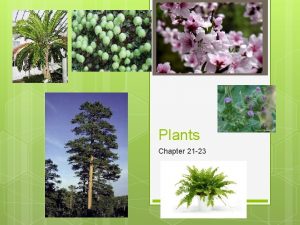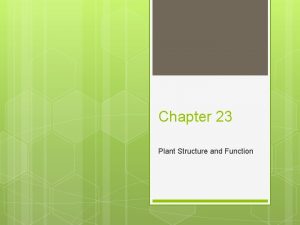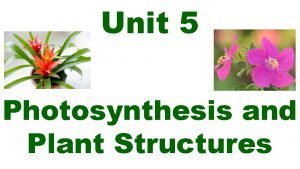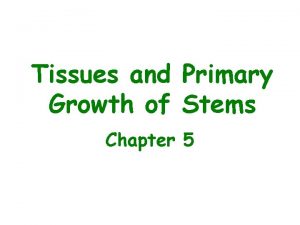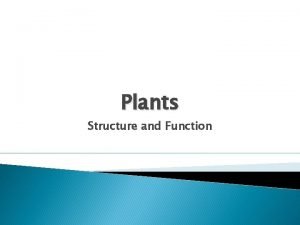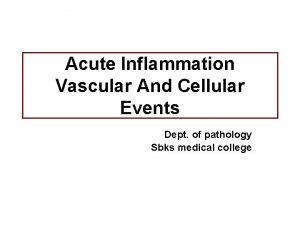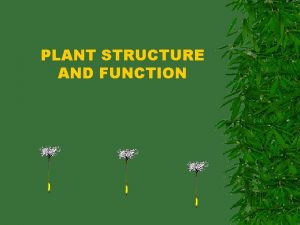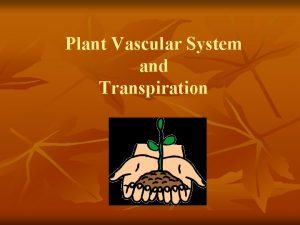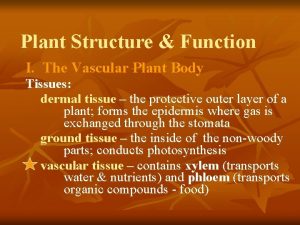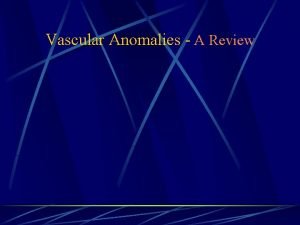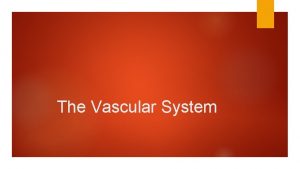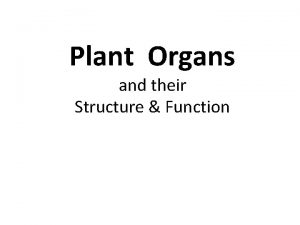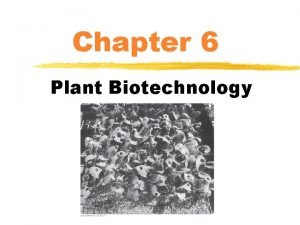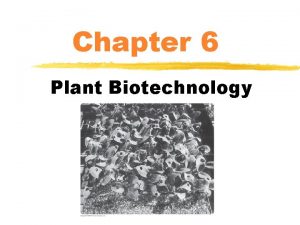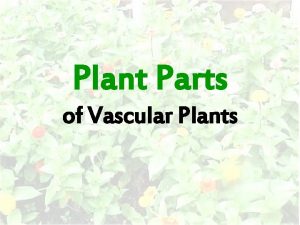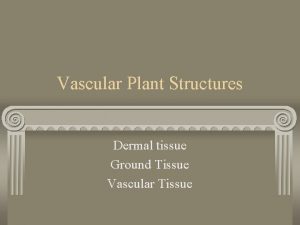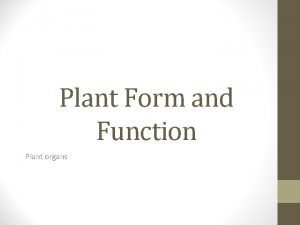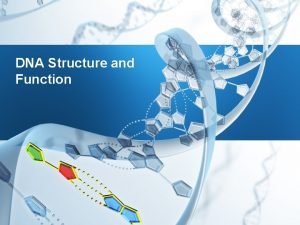Plant Structure and Function I The Vascular Plant



















- Slides: 19

Plant Structure and Function

I. The Vascular Plant Body A. Tissues - 3 types of tissue 1. Dermal tissue – tissue which covers a plant a. A thin layer of epidermis covers non-woody parts b. Several layers of cork cover woody parts 2. Ground tissue – specialized tissue a. photosynthesis in leaves b. support in stems c. storage in roots 3. Vascular tissue – conducts water, minerals and organic compounds a. Xylem - conducts water and minerals from roots to leaves through tubes made of hollow cells b. Phloem – conducts nutrients (sugars/starches) through tubes of living cells.


B. Roots 1. Function a. Anchor – holds plant in place b. Absorption – absorb water and minerals from soil c. Storage – can store carbohydrates 2. Structure a. Have a central core of vascular tissue which is surrounded by ground tissue and epidermal tissue b. Root hairs on root tips increase surface area are for absorption 3. Types a. Fibrous - many branching roots (monocots) b. Tap - large central root with small branches (dicots) c. Adventitious – supporting roots

Types of Root Systems Root – Cross-section

C. Stems 1. Function a. Support leaves b. House vascular tissue 2. Types of stems a. Non-woody (herbaceous) – contain bundles of xylem surround by a cylinder of phloem i. moncots have scattered bundles ii. dicots have bundles arranged in a ring b. Woody stems – have an inner core of xylem surrounded by a cylinder of phloem i. Heartwood – wood in the center of a mature stem which no longer conducts water ii. Sapwood – lies outside the heartwood and can conduct water


D. Leaves 1. Function a. Primary photosynthetic organs b. Exchange gases – take in CO 2 and release O 2 2. Structure a. Ground tissue and vascular tissue surrounded by epidermis b. Mesophyll conducts photosynthesis c. Openings in the epidermis called stomata (plural) exchange gases. d. Guard cells surround the stoma 3. Types a. simple – one blade attached to petiole b. compound – several blades attached to petiole



II. Transport in Plants A. Movement of Water 1. Transpiration – the loss of water from a plant’s leaves 2. Creates a pull that draws water up through xylem from roots to leaves 3. Guard cells - cells surrounding the stomata a. Control water loss by opening or closing the stomata b. Regulate the rate of transpiration c. Number and structure of stomata depend upon climate


B. Movement of Organic Compounds 1. Source – Part of the plant that provides organic compounds for other parts of the plant 2. Sink – part of the plant that receives the organic compounds. 3. Translocation – the movement of organic compounds within a plant from source to sink

Translocation

III. Reproductive Structures A. Flowers 1. Have 4 types of parts a. Petals – often brightly colored/marked to attract pollinators b. Sepals – protect buds/ attract pollinators c. Stamens – male structures – produce pollen in the anthers d. Pistils – female structures – produce ovules in ovary

Flower Structure


B. Fruit 1. Formed from the enlarged ovary and sometimes other parts of the flower 2. Contains seeds 3. Designed to protect seed 4. Designed to promote dispersal of seeds 5. Types of fruit a. Fleshy fruits – juicy, full of water and sugar cucumber, avocado, tomato, apple, orange, berries b. Dry fruits – have dry fruit walls peanuts, sunflower seeds, bean pods, cacoa

 Vascular and non vascular difference
Vascular and non vascular difference Vascular vs nonvascular plants
Vascular vs nonvascular plants Nonvascular plant
Nonvascular plant Are bryophytes seedless
Are bryophytes seedless Megaphylls vs microphylls
Megaphylls vs microphylls Phylum tracheophyta characteristics
Phylum tracheophyta characteristics Seedless vascular plants vs bryophytes
Seedless vascular plants vs bryophytes Vascular plant
Vascular plant Heterosporous
Heterosporous Secondary xylem
Secondary xylem Vascular function curve
Vascular function curve Structure of animalcell
Structure of animalcell Chapter 22 plant structure and function answer key
Chapter 22 plant structure and function answer key Chapter 21 plant structure and function
Chapter 21 plant structure and function Chapter 23 plant structure and function
Chapter 23 plant structure and function What is a node on a plant
What is a node on a plant Secondary xylem and phloem
Secondary xylem and phloem What is this
What is this Cellular events of acute inflammation
Cellular events of acute inflammation Imageshare medstar
Imageshare medstar
